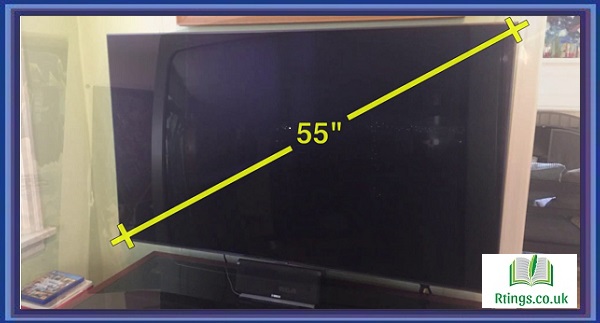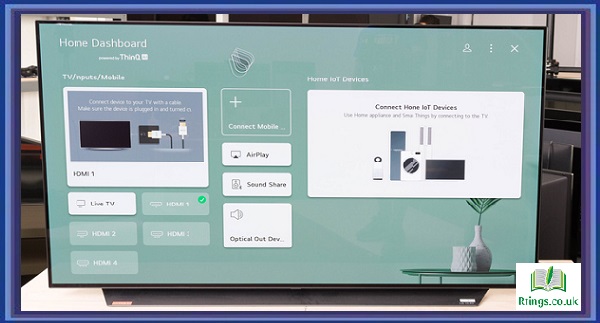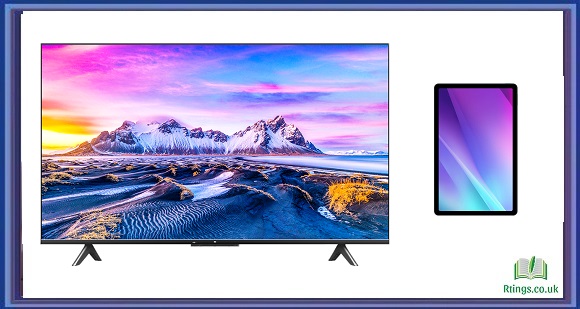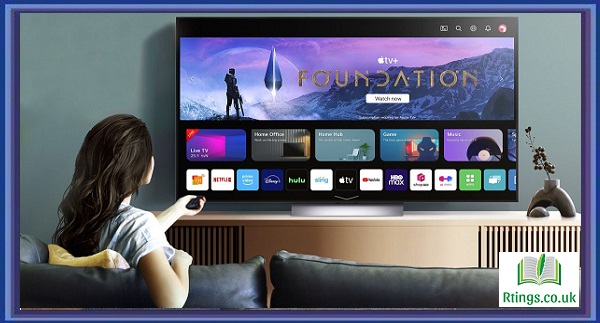When shopping for a TV, one of the most important factors to consider is the size of the television. The size of a TV can greatly impact the viewing experience, so it’s essential to choose the right size to suit your needs. In this article, we’ll provide a comprehensive guide on how TV size is measured, so you can make an informed decision when purchasing a new television.
Diagonal Measurement
The most common way to measure the size of a TV is by its diagonal measurement. This measurement is taken from the bottom corner of the screen to the top corner, crossing the centre of the screen. This measurement provides a clear and easy-to-understand number representing the TV’s overall size.
For example, a 50-inch TV will have a diagonal measurement of 50 inches, regardless of width or height. This measurement is typically used to describe the size of a TV and is the most important measurement to consider when choosing a TV.
Aspect Ratio
The aspect ratio of a TV refers to the relationship between the width and height of the screen. The aspect ratio can impact the viewing experience, as it determines the screen’s shape. The two most common aspect ratios are 4:3 and 16:9.
A 4:3 aspect ratio is the traditional ratio used in older CRT televisions and is still used in some older computer monitors. A 16:9 aspect ratio is the standard ratio used in modern widescreen televisions and is the most common ratio used today.
Screen Resolution
Screen resolution refers to the number of pixels on the screen and can greatly impact the viewing experience. The higher the resolution, the clearer and sharper the image will be. The two most common resolutions for TVs are 720p and 1080p.
A 720p resolution has a pixel count of 1280 x 720, while a 1080p resolution has a pixel count of 1920 x 1080. Higher resolutions, such as 4K (3840 x 2160), 8K (7680 x 4320), and even 16K (15360 x 8640), are becoming more common and offer even higher levels of detail and clarity.
Viewing Distance
The viewing distance is the distance between the viewer and the TV screen. This measurement is important to consider when choosing a TV, as it will impact the viewing experience. If you sit too close to a TV, the pixels can become visible, and the image quality may suffer. If you sit too far away, the screen may appear smaller than its actual size.
As a general rule, it’s recommended to sit at a viewing distance of approximately 1.5 to 2.5 times the diagonal measurement of the TV. For example, if you have a 50-inch TV, it’s recommended to sit at a distance of 75 to 125 inches from the TV.
Calculating TV Size and Viewing Distance
To determine the ideal size of TV for your room, you’ll need to consider the following factors:
- Room size: The size of your room will impact the size of the TV that you choose. Larger rooms can accommodate larger TVs, while smaller rooms may require smaller TVs.
- Viewing distance: As mentioned earlier, the viewing distance is between the viewer and the TV screen. It’s recommended to sit at a viewing distance of approximately 1.5 to 2.5 times the diagonal measurement of the TV.
- Aspect ratio: The TV’s aspect ratio will impact the viewing experience, so it’s important to choose an aspect ratio that suits your needs.
Conclusion
Measuring TV size is crucial in choosing the suitable television for your viewing needs. By understanding diagonal measurement, aspect ratio, screen resolution, and viewing distance, you can make an informed decision when purchasing a new TV. Consider the size of your room, the viewing distance, and your preferences when choosing the right TV size.
Frequently Asked Questions (FAQs)
What is the most common way to measure TV size?
The most common way to measure TV size is by its diagonal measurement. This measurement is taken from one bottom corner of the screen to the opposite top corner, crossing the centre of the screen. This measurement provides a clear and easy-to-understand representation of the overall size of the TV.
What is the aspect ratio of a TV?
The aspect ratio of a TV refers to the relationship between the width and height of the screen. The two most common aspect ratios are 4:3 and 16:9, with 16:9 being the standard aspect ratio used in modern widescreen televisions. The aspect ratio can impact the viewing experience, as it determines the screen’s shape.
Does screen resolution impact the overall viewing experience?
Yes, screen resolution can greatly impact the overall viewing experience. The higher the resolution, the clearer and sharper the image will be. The two most common resolutions for TVs are 720p and 1080p, but higher resolutions, such as 4K and 8K, are becoming more common and offer even higher levels of detail and clarity.
How does the viewing distance impact the viewing experience?
The viewing distance is the distance between the viewer and the TV screen and can impact the viewing experience. If you sit too close to the TV, the pixels can become visible, and the image quality may suffer. If you sit too far away, the screen may appear smaller than its actual size. It’s recommended to sit at a viewing distance of approximately 1.5 to 2.5 times the diagonal measurement of the TV.
How do I determine the ideal size of TV for my room?
To determine the ideal size of TV for your room, consider the room size, viewing distance, and aspect ratio. Larger rooms can accommodate larger TVs, while smaller rooms may require smaller TVs. The viewing distance should be approximately 1.5 to 2.5 times the diagonal measurement of the TV, and the aspect ratio should be chosen based on personal preference and viewing needs.







